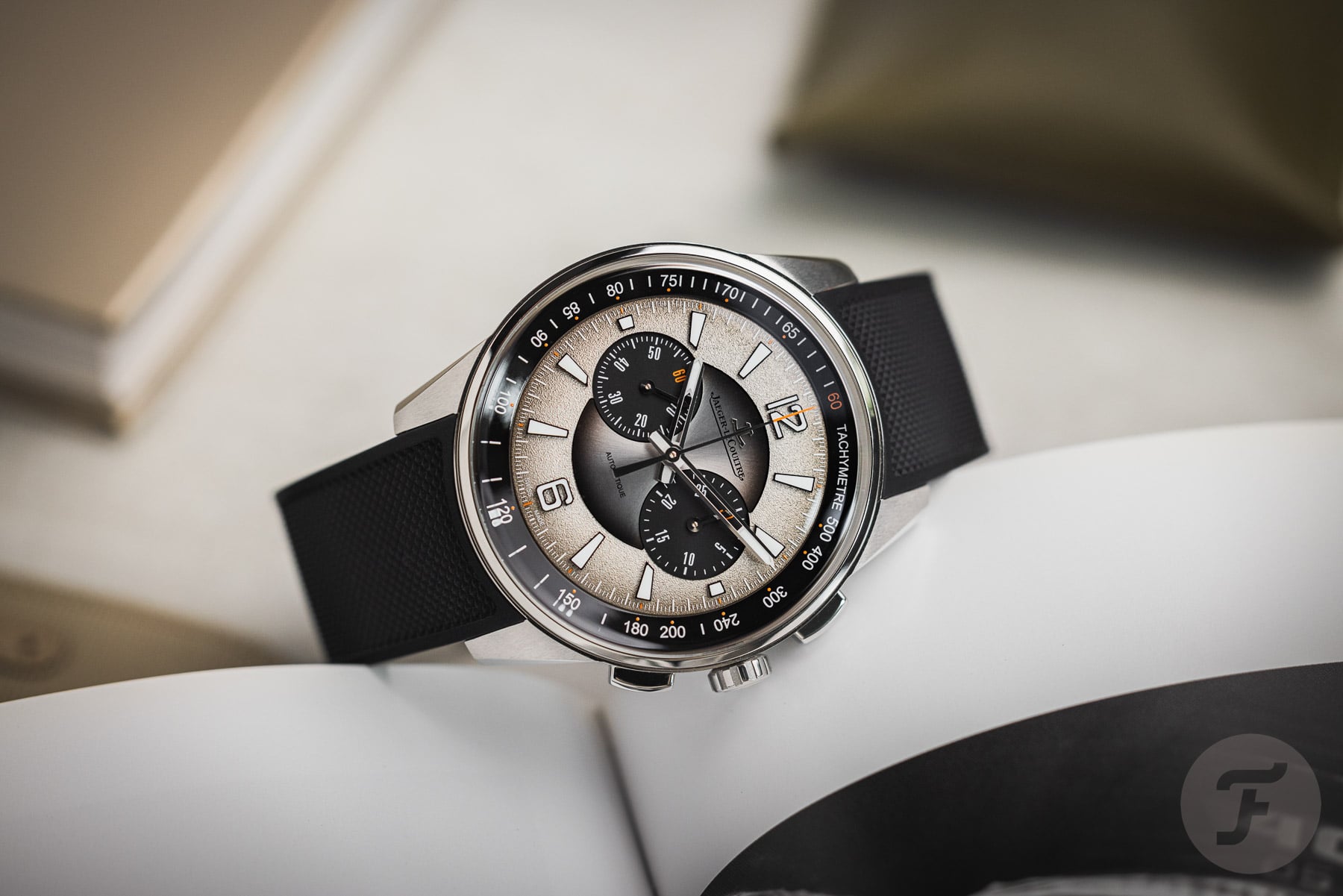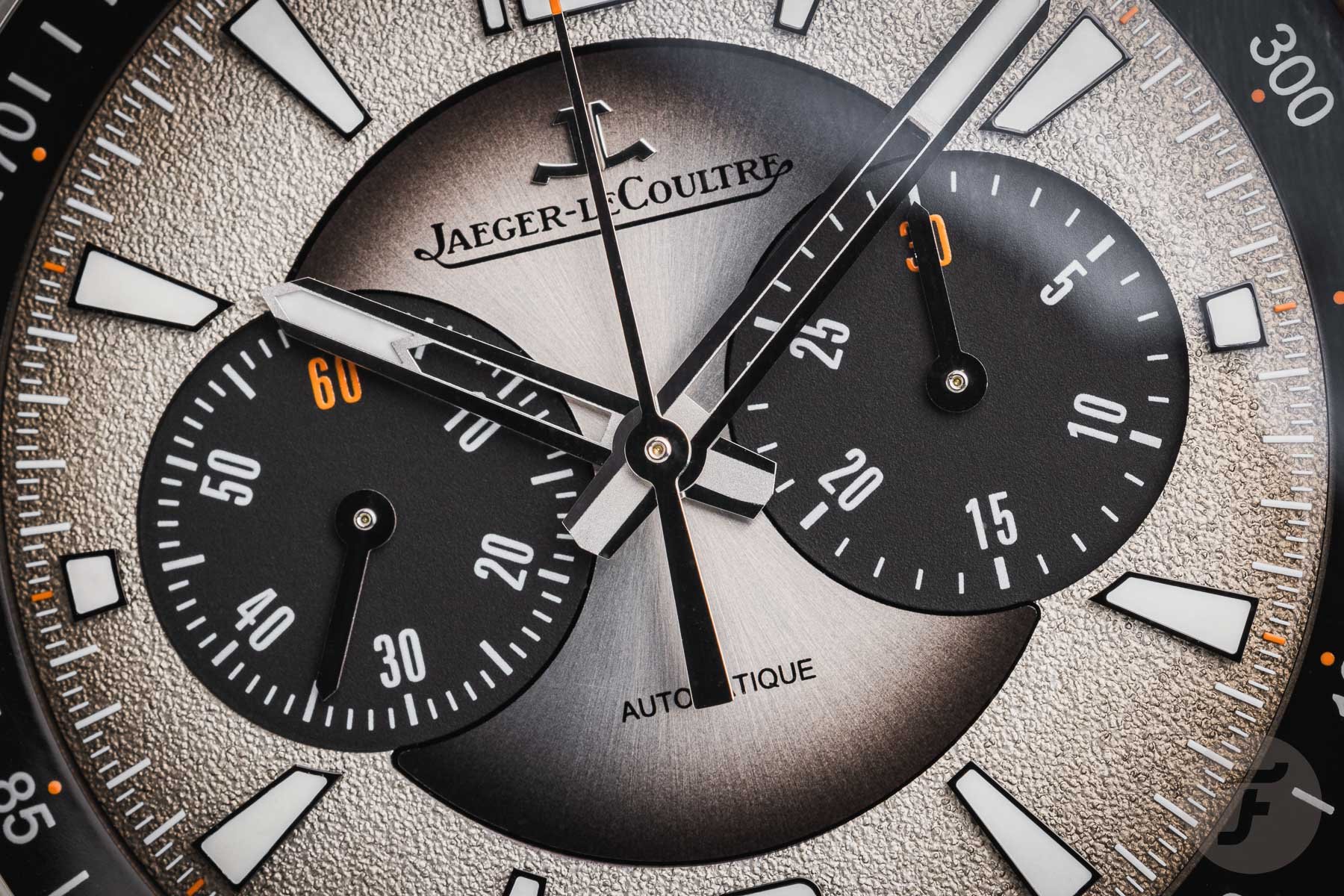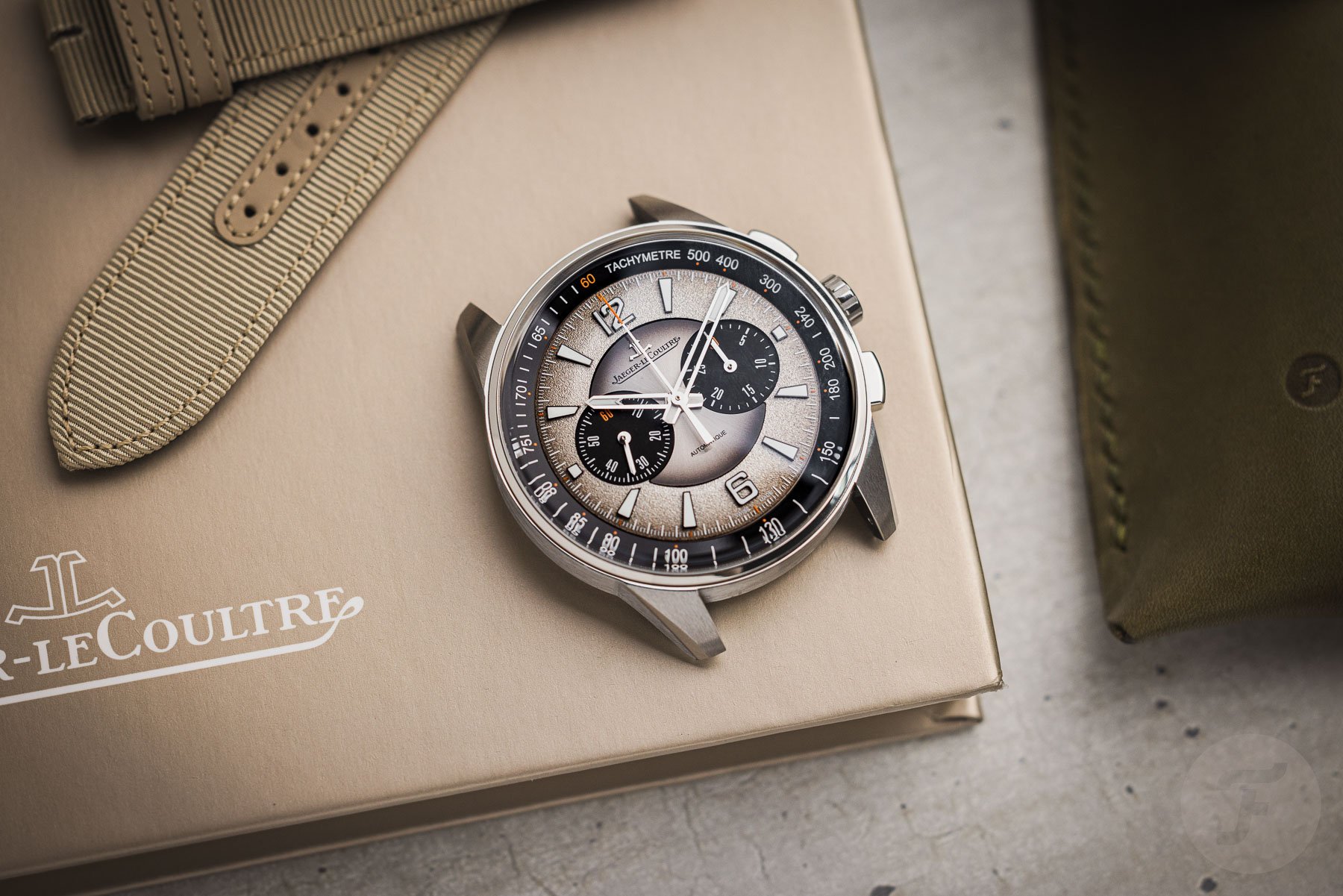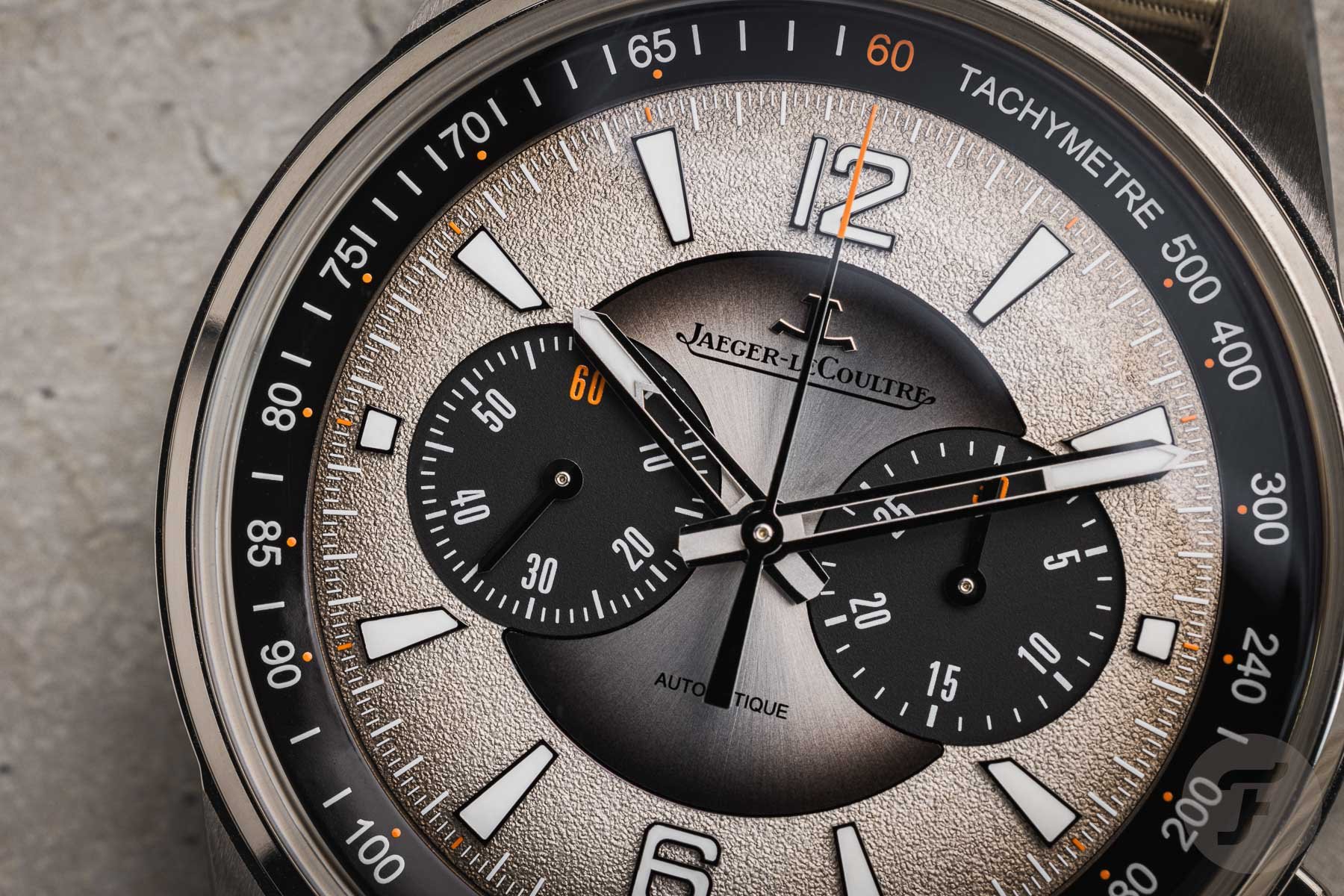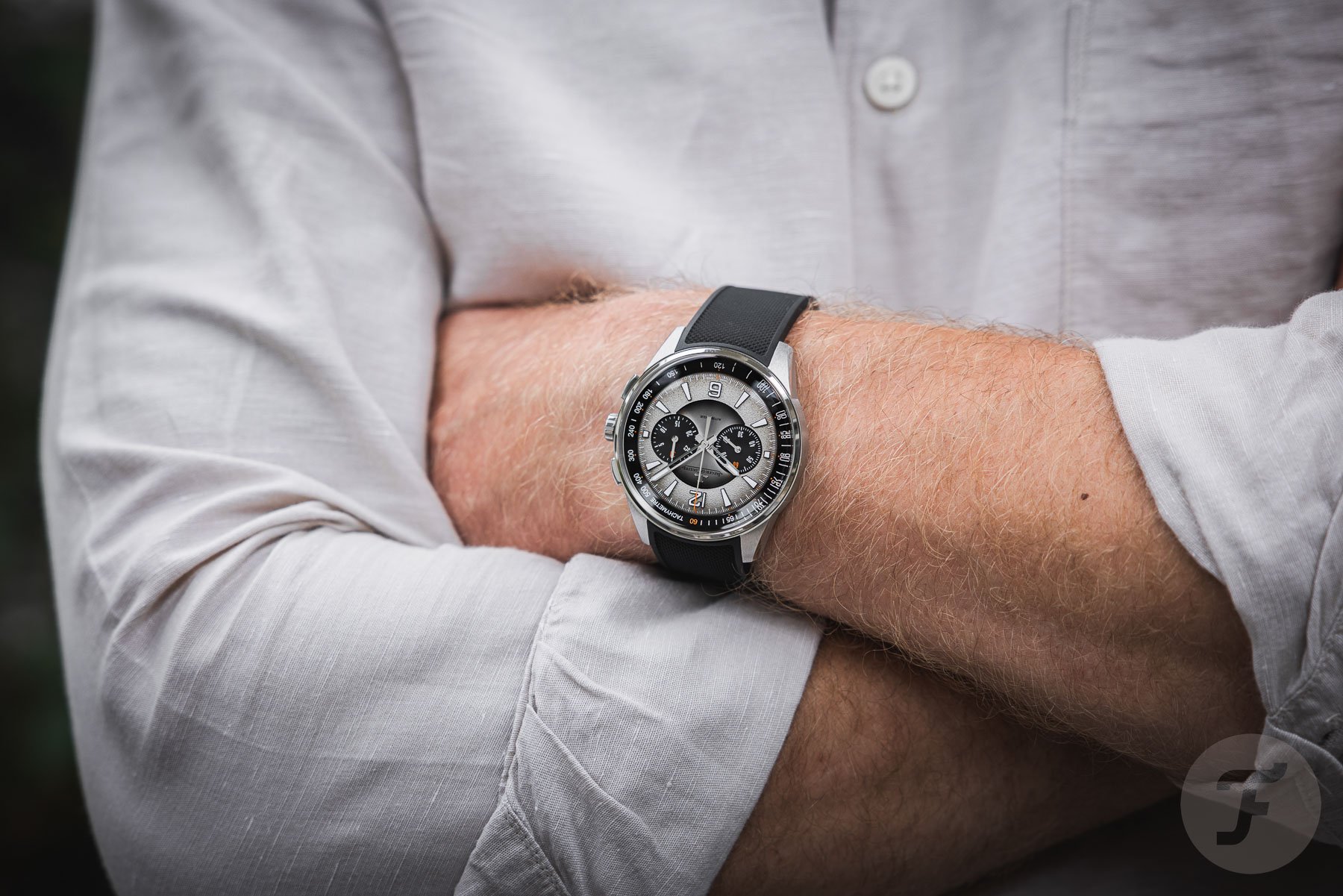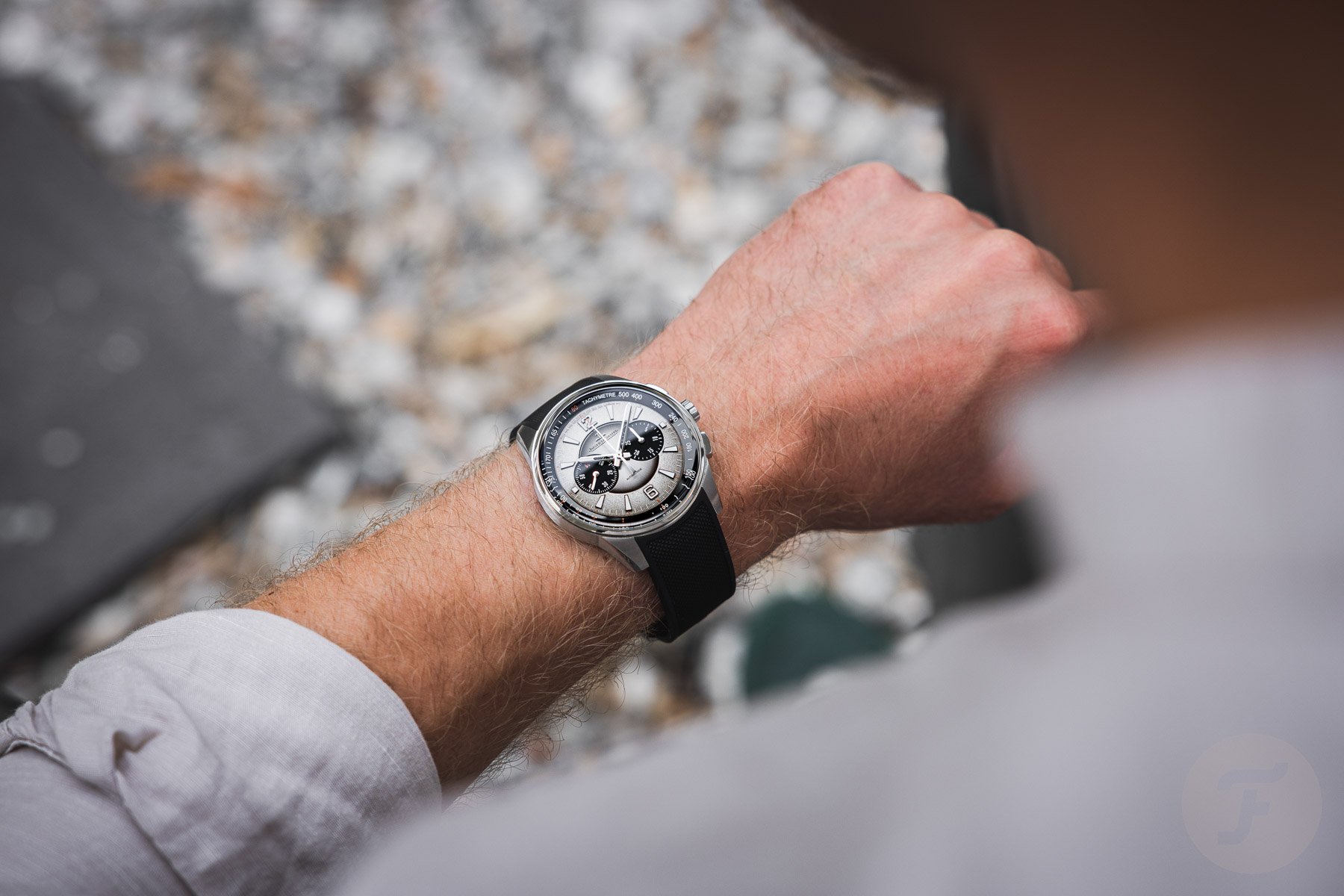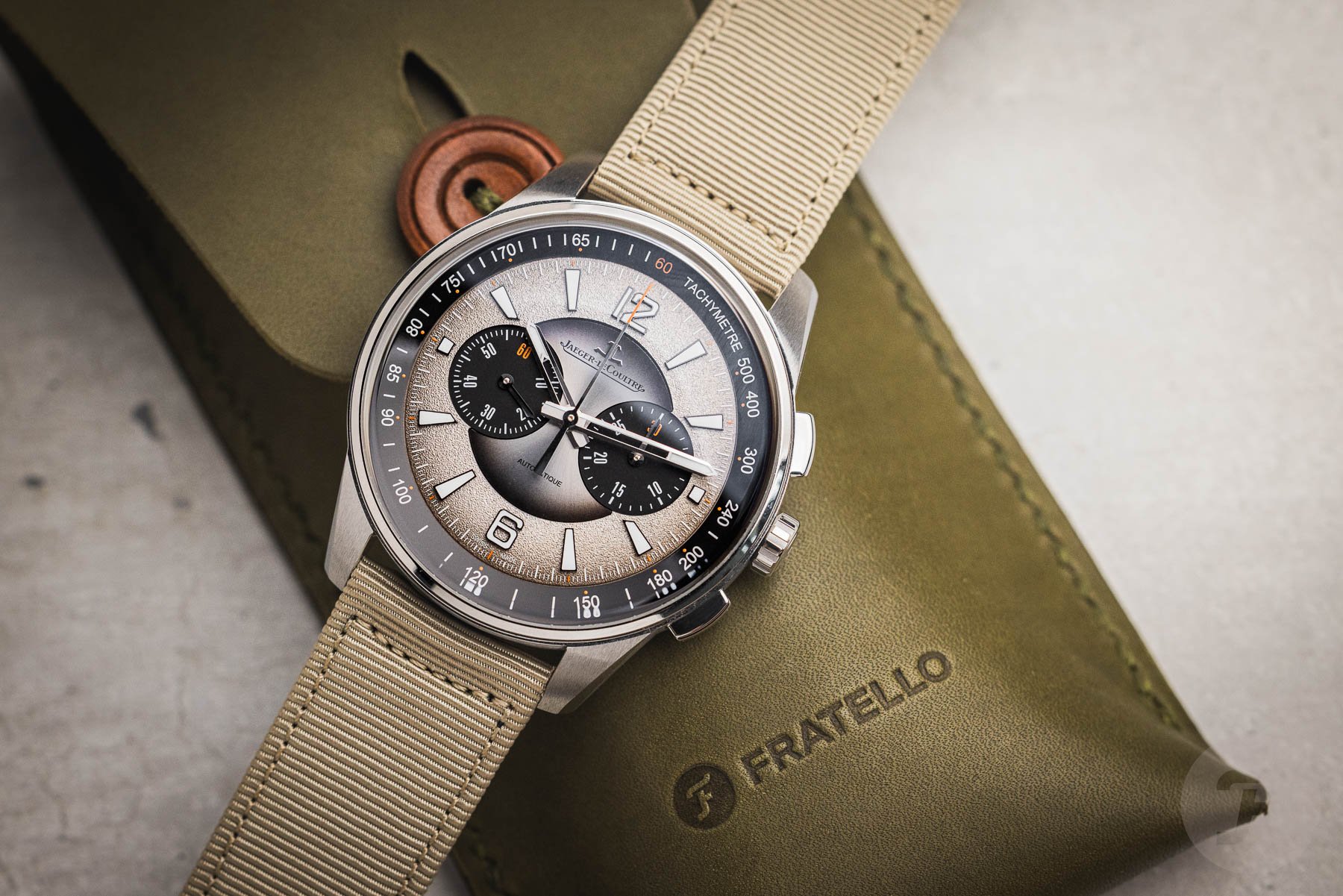There’s A New Jaeger-LeCoultre Polaris Chronograph In Town — A Hands-On Impression
Black and blue sunray dials were already available. Two three-piece lacquer dials, on the other hand, are new to the Jaeger-LeCoultre Polaris Chronograph watches. The dials showcase JLC’s artisanal skills housed within the manufacture in Le Sentier. And since the dial is the face of the watch, the new ones with a completely different finish give the watches a completely different look. There’s a blue version available alongside an iteration in a new, warm gray color that we had at Fratello HQ. Quite a striking watch, don’t you think? But is it too striking and perhaps even a bit too trendy for a JLC Polaris? Let’s take a closer look and find out.
It’s all about the dial with the new Jaeger-LeCoultre Polaris Chronograph (€15,800). The clear, crisp, and clean lines of the 42 × 13.39mm steel case have remained the same, along with the 100m water resistance. You get the sharp lines, retro-modern glass-box crystal, brushed and polished surfaces, plus a large 1960s-inspired crown and the functional, robust pushers you expect from a Polaris. And the automatic Jaeger-LeCoultre 761 movement with a 65-hour power reserve isn’t completely new either. Like the very similar caliber 751, you still get hours, minutes, small seconds, a chronograph with a 30-minute counter and central seconds indication, and a column wheel. It also looks fantastic through the rear sapphire crystal, and it operates smoothly and precisely. Sure, that’s all great, but it’s nothing too different. The lacquer dial, however, is completely distinct from the sunray black and blue ones already in the Polaris Chronograph lineup.
The three-piece lacquer dial of the new Jaeger-LeCoultre Polaris Chronograph
The gray lacquer dial of the new Polaris Chronograph took me a bit to get used to. At first, I had trouble recognizing it as a Jaeger-LeCoultre creation. And that’s not just because the gray dial shades are new to the brand from the Swiss Jura Mountains but also because of the number of details on that dial. First, there’s the complicated three-piece construction that consists of a central disc, a middle ring, and an outer ring. The middle part of the dial features the applied hour markers, and the outer part of it shows a tachymeter scale.
And there’s more. On both the central disc and the hour ring, the color of the lacquer graduates from light to dark. Lacquering like that is an intricate, lengthy, and exact process that underlines the artisanal expertise of JLC. Every layer of coating is done by hand. It all begins with a layer of clear varnish, and after that, the artisan puts on a layer of color. To get the right color and the precise gradation takes 35 coats of translucent lacquer. Only by adding these layers is this depth achieved.
I see a face on the face of the Polaris Chronograph
Do you see a face too? You don’t need a lot of imagination to see a face with two prominent black eyes in the dial. The balanced two-counter layout with a 30-minute register at 3 o’clock and the small seconds at 9 o’clock is a proven one. But because of the black sub-dials overlapping both the central and the middle parts of the dial, they really stand out. It’s not that the chronograph function is hard to read, though. On the contrary, the combination of a large central chronograph seconds hand and a 30-minute counter is very straightforward. It’s just the large amount of details JLC squeezed onto a watch dial that I find impressive.
Take a closer look, and you will discover the high gloss lacquer and opaline finish of the outer ring, a grainy texture on the middle part of the dial, and orange accents. There are orange numbers and dots on the dial’s middle and outer portions as well as both sub-dials. The tip of the chronograph seconds hand is orange too. More details that beg for attention are the skeletonized hands and the trapezoid-shaped indexes with a luminescent coating. The numerals and the tips of the hands glow in the dark as well.
Wearing the gray Polaris Chronograph
Now I have to choose. Do I want to wear the gray Polaris Chronograph with a beige canvas strap or a black rubber one with a hobnail pattern? The straps and the folding buckle are interchangeable, so it’s easy to figure out which of the two is my favorite. The gray and beige color combo is the more outspoken of the pair. It fits the bold look of the dial best. It could even be considered extravagant for a JLC or trendy, at least. The combination of colors and shades that graduate from light to dark and the mix of dial finishes look very 2023. “The traditionalists of Patek Philippe played with these colors and mix of finishes before, so why not do the same?” the like-minded people in power at JLC must have thought.
On the black rubber strap, the Polaris Chronograph in gray looks the calmest. This has got to be my favorite look. With the canvas strap, it’s a bit over the top for me. But I don’t doubt that it’s precisely this look that will draw the most attention. It borders on military styling but looks retro outdoorsy, active, and rugged. The balanced case proportions, overall size, and weight distribution make the Polaris Chronograph an easy-to-wear watch. It feels like a sports watch, so it’s a tad prominent, but that’s kind of what you want from a chronograph.
Pricing and the final question
Is the new Polaris Chronograph worth the €15,500 price? Well, it is a chronograph from one of the most renowned watchmaking brands in the world, the movement is made in-house, and the attention to detail and finishing matches Haute Horlogerie standards. So yes, the price is fair, not overly ambitious. You will just have to consider if the bold gray version is the one for you and if you can unsee the face on the dial.
For more information on the new Polaris Chronograph in gray (Q902843J) and deep blue (Q9028181), visit the official Jaeger-LeCoultre website.

